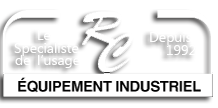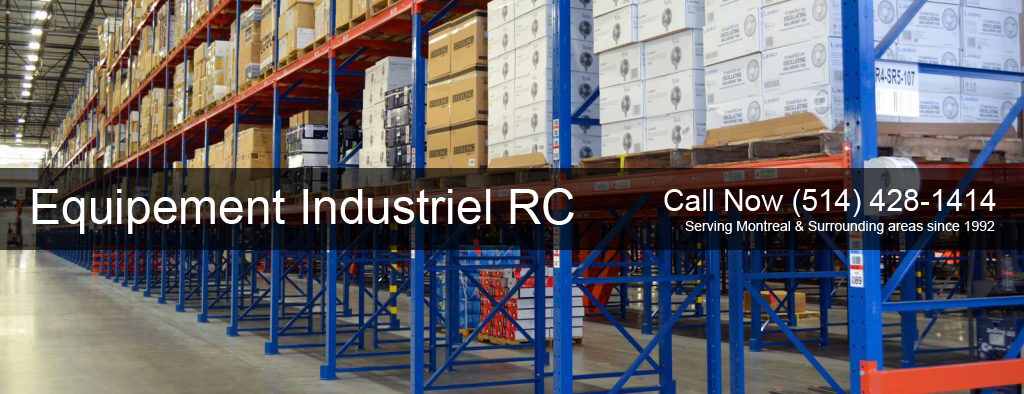Used Racking: A Practical Approach to Warehousing
Intro
When it comes to optimizing warehouse space and improving storage efficiency, used racking can be a game-changer. Used racking provides a cost-effective solution for businesses looking to maximize their storage capacity while also promoting sustainability through the reuse of materials. In this article, we will explore the practical benefits of using used racking in a warehouse setting.
The Cost-Effectiveness of Used Racking
Adopting used racking in a warehouse presents a financially savvy strategy, particularly beneficial for small enterprises and emerging businesses grappling with budget constraints. This cost-effectiveness stems from the significant price difference between acquiring new versus used racking systems, where the latter offers substantial savings. Such financial prudence allows for the reallocation of funds towards other critical business operations, whether it be enhancing logistic operations, broadening product offerings, or investing in technology to streamline processes.
Within this fiscal context, the appeal of used racking transcends mere initial savings. It also encompasses a longer-term perspective on investment optimization. By reducing upfront costs, businesses can achieve a quicker return on investment (ROI), enhancing their overall financial stability and growth potential. This is particularly crucial in competitive markets where efficiency and agility can determine business success.
Furthermore, the process of sourcing and installing used racking can often be quicker than waiting for new installations. This time efficiency ensures that businesses can expedite their operational setup or reconfiguration, thus minimizing downtime and accelerating the pace at which they can respond to market demands or internal needs.
It’s imperative to underscore that the cost benefits of used racking do not equate to a compromise on quality. Vendors specializing in used racking systems typically conduct rigorous inspections and necessary refurbishments to ensure that the products meet stringent safety and performance standards. This assurance allows businesses to capitalize on the economic advantages of used racking without jeopardizing their operations’ efficacy or safety.
In essence, the strategic choice to incorporate used racking within a warehouse setup epitomizes financial acumen. It represents an informed decision to optimize resource allocation, ensuring that businesses can maximize their operational efficiency and strategic flexibility without incurring unnecessary expenditure.
Environmental Benefits of Reusing Racking
Opting for used racking systems transcends mere cost savings; it embodies a conscious decision towards environmental stewardship. The reuse of racking equipment plays a pivotal role in curtailing the demand for raw materials, which, in turn, diminishes the environmental strain attributed to production processes. This reduction in raw material demand is significant, considering the extensive resource extraction and processing required to manufacture new racking systems. By repurposing existing racking, businesses actively contribute to the reduction of these environmentally intensive activities, aiding in the conservation of natural resources.
Moreover, the environmental implications of discarding obsolete or unwanted racking cannot be understated. Landfills are increasingly burdened with non-degradable materials, contributing to pollution and habitat destruction. Through the adoption of used racking, businesses prevent the premature relegation of functional racking systems to waste, thereby mitigating the volume of industrial products destined for landfills. This practice not only aids in waste reduction but also promotes a circular economy model where products are reused and repurposed to extend their lifecycle, thereby minimizing the environmental footprint of warehousing operations.
The environmental benefits of utilizing used racking align with the growing emphasis on sustainable business practices. Companies incorporating reused racking into their operations demonstrate a commitment to environmental responsibility, a stance that resonates with consumers, investors, and partners increasingly prioritizing sustainability. This approach not only fosters a positive environmental impact but also positions businesses as leaders in sustainable practices within their industry.
In adopting used racking, businesses harness the opportunity to make a tangible contribution to environmental conservation. The decision to repurpose racking systems encapsulates a broader commitment to sustainable operations, reflecting an understanding that effective resource management and environmental responsibility are integral to long-term business success and ecological sustainability.
Ensuring Quality and Safety in Used Racking
Concerns regarding the quality and safety of used racking systems are valid, yet addressable. The market for used racking includes a spectrum of suppliers, among which are highly reputable firms dedicated to ensuring their products not only meet but often exceed industry safety standards. These suppliers engage in meticulous inspection and refurbishment processes to guarantee that each piece of used racking they sell upholds the highest quality and safety criteria.
The journey of a used racking system from one warehouse to another involves a rigorous assessment for any signs of damage, wear, or structural compromise. Specialists in the field undertake repairs, replace defective components, and apply protective finishes to restore the racking to a condition that rivals new systems in functionality and safety. It’s important to recognize that these efforts are rooted in a deep understanding of the engineering and design principles that underpin racking systems, ensuring that refurbished units provide reliable service in their new settings.
Adherence to industry standards is a cornerstone of the refurbishment process. Certified engineers and safety inspectors play a pivotal role in this phase, applying their expertise to certify that each unit complies with specific regulations and codes. This comprehensive approach to quality assurance addresses potential safety concerns head-on, allowing businesses to integrate used racking into their operations with confidence.
Moreover, establishing a routine maintenance and inspection schedule further extends the lifespan and ensures the ongoing safety of used racking systems. Businesses benefit from adopting proactive measures, such as regular checks and load assessments, to maintain the integrity of their storage infrastructure over time.
Customization and Flexibility with Used Racking
In the dynamic landscape of warehousing and inventory management, the adaptability provided by used racking systems emerges as a significant advantage. These systems offer an unparalleled degree of customization, enabling warehouses to tailor their storage solutions to the evolving needs of their operations. The inherent flexibility of used racking accommodates a variety of product sizes, weights, and shapes, ensuring that businesses can efficiently manage a diverse inventory without the need for constant structural overhauls.
The modular nature of used racking systems facilitates easy adjustments and reconfigurations. This adaptability proves invaluable for warehouses experiencing changes in inventory levels, product lines, or operational strategies. Businesses can reorganize their storage setups to enhance accessibility and workflow, improve order fulfillment rates, and adapt to market trends or seasonal fluctuations in product demand. This level of customization extends beyond mere spatial optimization; it allows for strategic warehouse management that aligns with broader business goals.
Furthermore, the ability to modify and repurpose used racking systems underscores their role in fostering scalable operations. As businesses grow and their storage needs evolve, used racking can be reconfigured or expanded upon without the need for complete system replacement. This scalability not only supports operational growth but also contributes to cost containment by avoiding the expenses associated with purchasing entirely new racking installations.
By leveraging the customization and flexibility inherent in used racking, businesses can achieve a highly efficient and responsive warehouse environment. The practicality of modifying these systems as needed, combined with the financial and environmental benefits previously discussed, positions used racking as a strategic asset for warehouses aiming to remain agile in a competitive marketplace. Through thoughtful integration and ongoing management of used racking, warehouses can sustain high levels of operational efficiency and adaptability, key components to thriving in today’s fast-paced commercial landscape.
The Impact on Warehouse Efficiency
The adoption of used racking systems serves as a cornerstone for enhancing warehouse efficiency, offering businesses the opportunity to refine their storage solutions and optimize operational workflows. These systems, characterized by their robustness and adaptability, allow for a strategic organization of inventory that significantly improves space utilization. By capitalizing on the ability to customize and adjust racking configurations, warehouses can accommodate a diverse range of products and fluctuating inventory volumes without the need for extensive structural modifications.
The strategic implementation of used racking supports a streamlined approach to inventory management. With the capability to design layouts that facilitate easy access to goods and efficient material handling, warehouses can see a reduction in the time and labor required for day-to-day operations. This efficiency not only boosts productivity but also enhances the accuracy of inventory tracking and order fulfillment processes. As a result, businesses are better positioned to meet customer demands promptly, reinforcing their competitive edge in the market.
Furthermore, the scalability of used racking systems plays a pivotal role in sustaining operational growth. As warehouses expand or shift their focus in response to market trends, these racking solutions can be reconfigured or augmented to support the evolving needs of the business. This flexibility ensures that warehouses can maintain high levels of efficiency and responsiveness, even as their operational requirements change.
In essence, the integration of used racking into warehouse operations has a profound impact on efficiency, driving improvements in space management, inventory control, and overall productivity. By embracing these systems, businesses can achieve a more organized and effective storage environment, paving the way for operational excellence and sustained growth. The inherent benefits of used racking, from cost savings to environmental sustainability, further underscore its value as a strategic asset for warehouses committed to optimizing their operations and reducing their ecological footprint.

